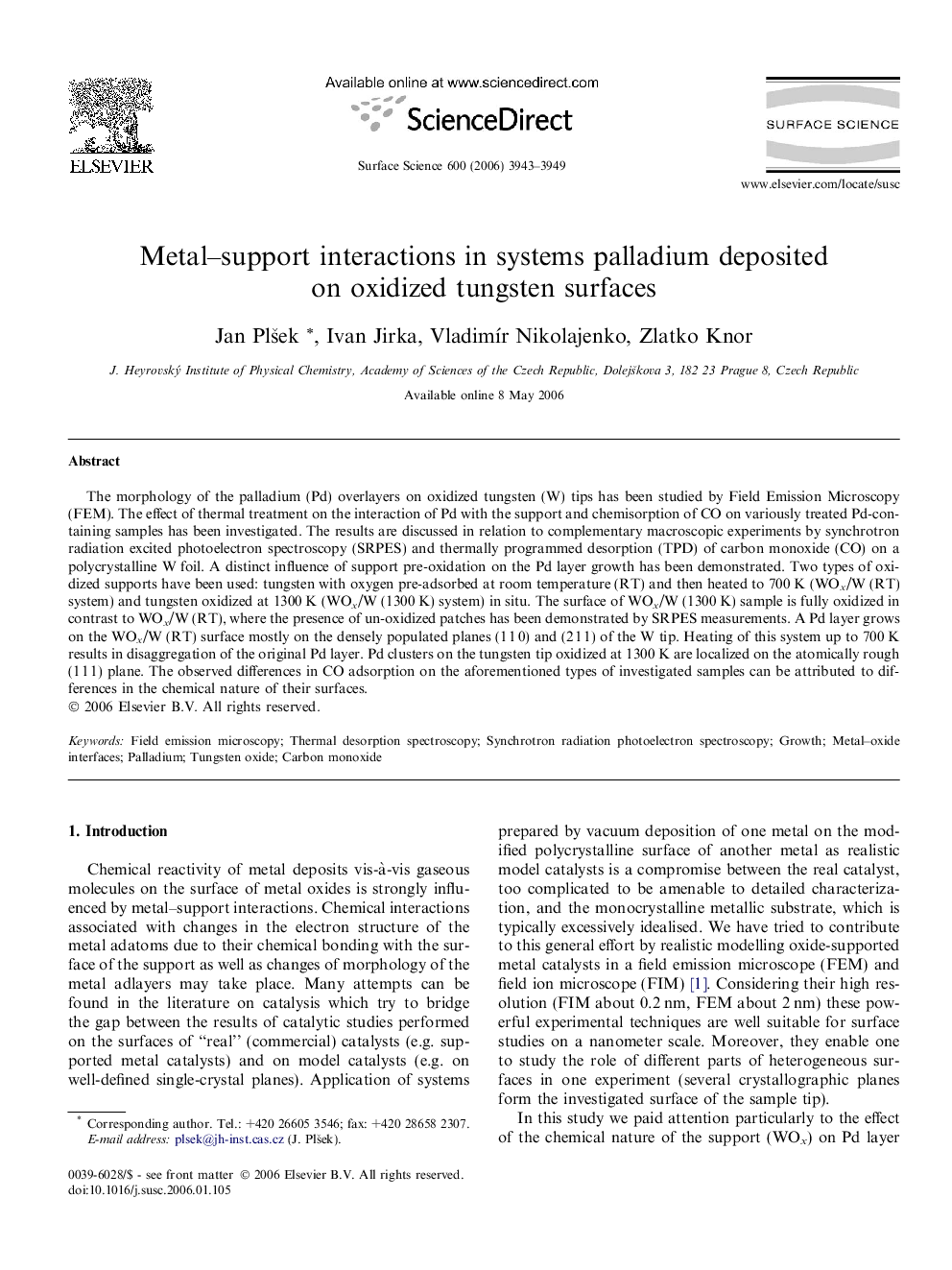| Article ID | Journal | Published Year | Pages | File Type |
|---|---|---|---|---|
| 5426458 | Surface Science | 2006 | 7 Pages |
The morphology of the palladium (Pd) overlayers on oxidized tungsten (W) tips has been studied by Field Emission Microscopy (FEM). The effect of thermal treatment on the interaction of Pd with the support and chemisorption of CO on variously treated Pd-containing samples has been investigated. The results are discussed in relation to complementary macroscopic experiments by synchrotron radiation excited photoelectron spectroscopy (SRPES) and thermally programmed desorption (TPD) of carbon monoxide (CO) on a polycrystalline W foil. A distinct influence of support pre-oxidation on the Pd layer growth has been demonstrated. Two types of oxidized supports have been used: tungsten with oxygen pre-adsorbed at room temperature (RT) and then heated to 700Â K (WOx/W (RT) system) and tungsten oxidized at 1300Â K (WOx/W (1300Â K) system) in situ. The surface of WOx/W (1300Â K) sample is fully oxidized in contrast to WOx/W (RT), where the presence of un-oxidized patches has been demonstrated by SRPES measurements. A Pd layer grows on the WOx/W (RT) surface mostly on the densely populated planes (1Â 1Â 0) and (2Â 1Â 1) of the W tip. Heating of this system up to 700Â K results in disaggregation of the original Pd layer. Pd clusters on the tungsten tip oxidized at 1300Â K are localized on the atomically rough (1Â 1Â 1) plane. The observed differences in CO adsorption on the aforementioned types of investigated samples can be attributed to differences in the chemical nature of their surfaces.
